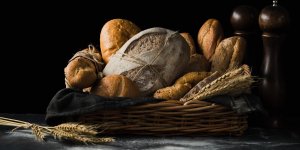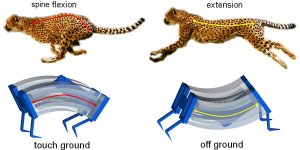| News / Science News |
Great power in a small seed
DANIEL ŞTEFĂNIŢĂ | MAY 25, 2020
Salvia hispanica, commonly known as chia, is a species of flowering plant in the mint family, Lamiaceae, native to central and southern Mexico and Guatemala. It is considered a pseudocereal, cultivated for its edible, hydrophilic chia seed, grown and commonly used as food in several countries of western South America, western Mexico, and the southwestern United States.
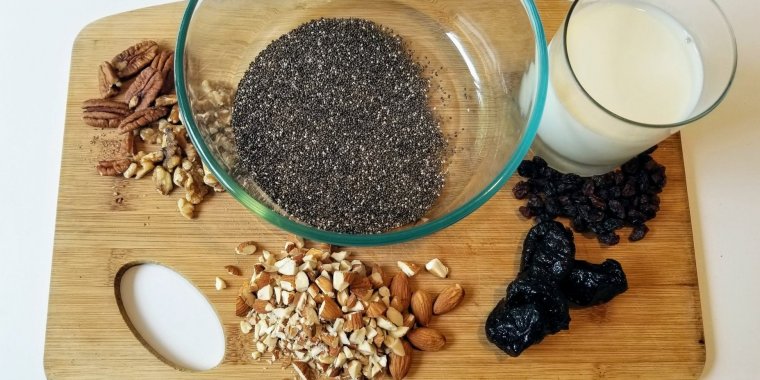
Chia pudding ingredients. Photo: D. Ştefăniţă
Chia has been known for over 5,500 years, being one of the most important components of the diet of Mayans and Aztecs. The chemical composition and technological properties of chia give the plant a high nutritional potential.
Chia is a good source of polyunsaturated fatty acids: omega-3 and omega-6, soluble dietary fiber. It also contains an appreciable amount of proteins and phytochemicals.
Nutritional value of chia is the reason why it is used in prophylaxis of several non-infectious diseases such as obesity, hypertension, cardiovascular diseases (CVDs), cancer and diabetes.
Nutritional and therapeutic aspects of chia are currently being researched by many scientific centres. (see Marcinek K, Krejpcio Z. Chia seeds (Salvia hispanica): health promoting properties and therapeutic applications – a review. USA NIH).
There are many many ways chia seeds can be consumed: mixed in yogurt, juices, salads, puddings, cereals, baked in breads, as an egg substitute. See below for a pudding idea.
Many medical studies report the health benefits of this tiny seed. But what exactly is it in it? The USDA food database shows the following nutrient content for 100 grams of chia seeds (RDA is the Recommended Dietary Allowances for the different nutrients):
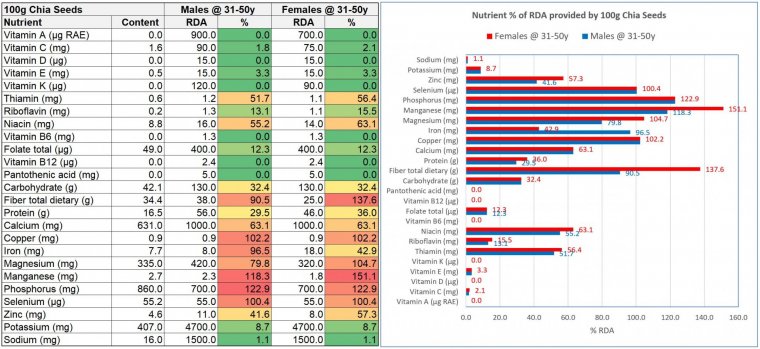
Let’s compare nutritional content of 100 grams of chia seeds to 100 grams beef steak:
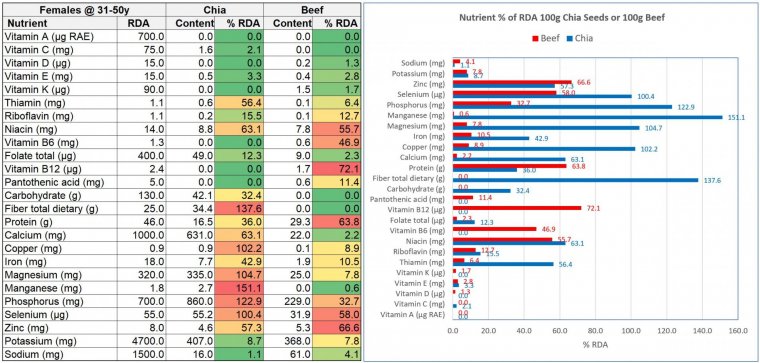
It is well known that a pure plant based diet is vitamin B12 deficient. How would chia seeds combined with some whole milk greek yogurt fare against the beef?
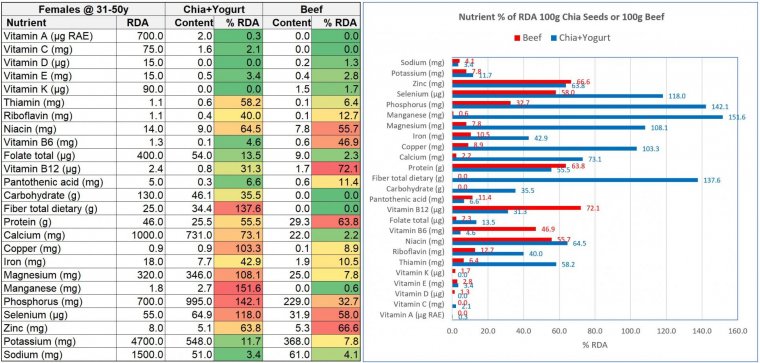
Additional nutrients, not listed in the RDA:
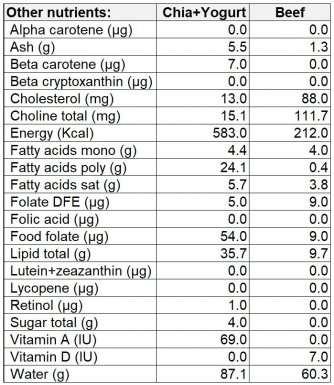
Chia pudding recipe
Chia seeds absorb a lot of water (more than 10 times their weight), so add milk according to preferences.
A word of warning here: chia seeds bulk up quickly in presence of moisture, so never eat chia without first soaking them with all the water (or milk, juice, etc.) they need to avoid the danger of choking. Keep away from children.
Ingredients
• 50 grams chia seeds,
• 150 ml milk,
• 40 grams chopped almonds,
• 40 grams walnuts,
• 20 grams pecan walnuts,
• 5 or 6 dried prunes or any other dried fruits.
• a pinch of cinnamon.
Mix all together then place in the fridge for a couple of hours.
YOU MAY ALSO LIKE


